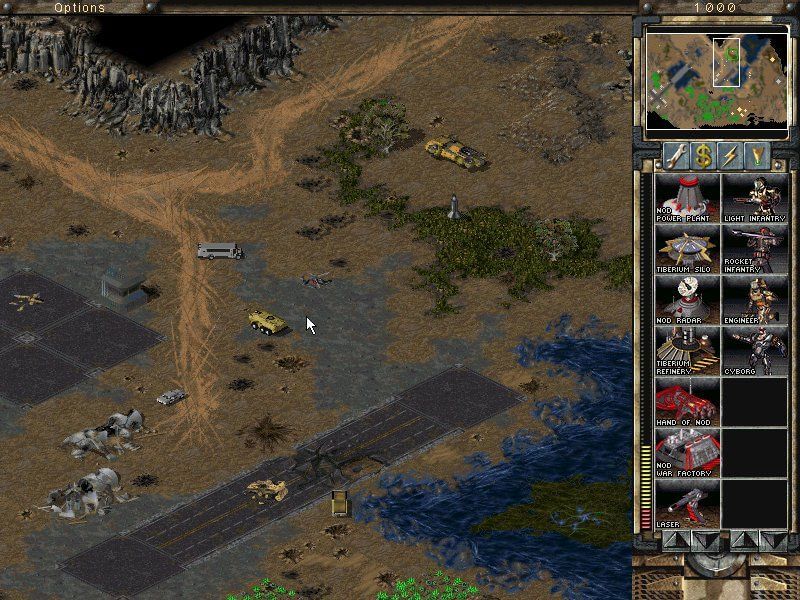Tiberian Sun Firestorm Maps
1999 video game Command & Conquer: Tiberian Sun Brett W. Sperry Donny Miel Rade Stojsavljevic Adam P.
Isgreen Brett W. Sperry Erik Yeo Bret Ambrose Joseph Bostic Steve Tall Tse Cheng Lo Eric Gooch Jim May Jarrid Mendelson Series Release August 27, 1999 Mode(s), Command & Conquer: Tiberian Sun is a video game developed by and released in 1999. The main storyline follows the second major war between the (GDI) of the, and the global organization known as the. The story takes place 30 years after the GDI had won the First Tiberium War in. As of February 12, 2010, licensed Tiberian Sun and its expansion pack as. Contents • • • • • • • • • • Synopsis [ ] Set in 2030, the plot of Tiberian Sun is a follow-up to the original game Command & Conquer, after the end of which the Nod leader is presumed dead. In Tiberian Sun, Kane resurfaces from his hideout with improved military forces and new Tiberium-enhanced technologies, determined to convert Earth into a Tiberium world.
The GDI commander is tasked with preventing the world from falling into the hands of Nod, this time with the very means of the extraterrestrial Tiberium substance. Meanwhile, Nod general Anton Slavik must unite a splintered Brotherhood of Nod before joining Kane's fight against GDI. A third faction, The Forgotten, are caught in the middle of this fight and join either side, sometimes as playable and sometimes as non-playable characters. The game consists of two campaigns following the outcome of Kane dying and Nod destroying the Philadelphia space station.
C&C Tiberian Sun Firestorm GameFront Archive Apr 11 2017 Other Collection of fan-made mods and maps for Command & Conquer: Tiberian Sun - Firestorm from the old GameFront.
Gameplay [ ]. GDI forces attacking a Nod base. The gameplay has similar principles to Tiberian Dawn but with newer and upgraded units and structures plus three new types of tiberium that can be harvested. Tiberian Sun relies heavily on science fiction technologies, and introduces a new game engine featuring varying level terrain to give the impression of a true environment. Dynamic lighting allows for day/night cycles and special effects, such as ion storms. Maps feature cityscapes where units could hide or battle in urban combat.
Dec 03, 2007 This is from the classic opus 37 setting of the Vsenoshnoye Vedeniye (All-night Vigil) by Sergei Rakhmaninov. The Estonian Philharmonic Chamber Choir sings it. Velichit dusha moya gospoda myasnikov noti en. Read about Velichit dusha moya Gospoda by St Petersburg Chamber Choir and see the artwork, lyrics and similar artists. Read about Velichit dusha moya Gospoda by St Petersburg Chamber Choir and see the artwork, lyrics and similar artists. Playing via Spotify Playing via YouTube.
Some buildings and armored units are rendered with, although infantry is still rendered as sprites. During the campaign, different routes can be chosen, some of which can lead to optional missions that may affect the difficulty of the main mission, or supply the player with additional units and technologies. Tiberian Sun is the last game of the series to offer the split-route feature. Tiberian Sun features using traditional cinematic shots, featuring well-known actors. Plays GDI commander Michael McNeil, who reports to, played. On the side of Nod, portrays the commander, who only lives to follow and enforce every thought of Kane, played by the franchise's cutscene director.
The Forgotten are represented by portraying Umagon who teams up with Michael McNeil throughout their joint fight against Nod, Christopher Winfield portraying Tratos, the visionary Mutant leader, and Nils Allen Stewart portraying Mutant Commando. Tiberian Sun features a futuristic and ambient soundtrack by Jarrid Mendelson and, who composed the signature themes for the movie sequences, as well as the game's with the intention to differ from the original Command & Conquer in order to capture the mood for each mission. Development [ ] Tiberian Sun was announced after the release of the original Command & Conquer, with a trailer featured on its discs.
After was facing financial difficulties and was selling some of its assets, acquired Westwood Studios in 1998 and published Tiberian Sun, and had no direct part in its development. Tiberian Sun 's development was troubled before and after the acquisition, and was delayed numerous times - first for November 1998, then for spring 1999, then ultimately summer 1999.
This resulted in a number of and features being omitted from the game, some of which were later included in expansion pack, as well as numerous bugs which have not been fixed even after the patching period. Several images and references in the Tiberian Sun 'rules' file indicate that more features were planned for the release. A former Westwood employee,, who was working for at the time, elaborated upon them in March and May 2007. Drop-pods were intended to be customizable for GDI before deployment. Lighting was intended to make a huge difference for day/night play, as units spotted by light posts/towers would be susceptible to enemy fire at greater ranges, and in turn would suffer a reduction in their own range ability.

Westwood planned the Hunter/Seeker Droid option to support selection of target types, but ultimately the droid was made to attack at random. Developers also didn't have enough time to finalize balanced differences in terrain types. While and balancing worked out according to plan, during development many other problems occurred. For example, the dynamic battlefield with terrain alteration and was very ambitious, but had to be reduced as it led to unsolvable problems. Also a 'loadout' screen was to be implemented, allowing commanders to pick units to take into battle before missions. The idea did not fit into the final project, so it was cut although fully developed. Other unpolished ideas were kept in leading to a lot of.
